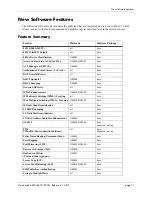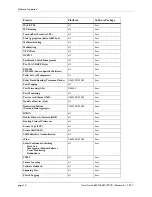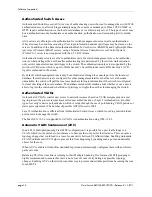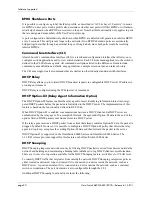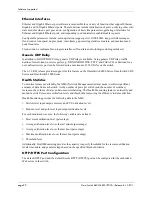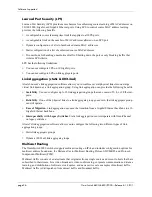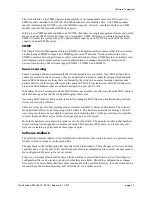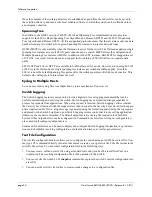
Software Supported
OmniSwitch 6800/6850/9000—Release 6.1.3.R01
page 21
•
Traffic Suppression
—Prevents the flooding of DHCP packets on the default VLAN for a DHCP
Snooping port. Note that enabling traffic suppression on a port will prevent DHCP traffic between a
DHCP server and client that belong to the same VLAN domain.
•
IP Source Filtering
—Restricts DHCP Snooping port traffic to only packets that contain the client
source MAC address and IP address obtained from the DHCP lease information. The DHCP Snooping
binding table is used to verify the client lease information for the port that is enabled for IP source
filtering.
•
Rate Limiting
—Limits the number of DHCP packets on a port. This functionality is provided using
the QoS application to configure ACLs for the port.
DHCP Snooping is supported on the OmniSwitch 6800 Series and OmniSwitch 6850 Series. The
6.1.3.R01 release provides support for this feature on the OmniSwitch 9000 Series.
DNS Client
A Domain Name System (DNS) resolver is an internet service that translates host names into IP addresses.
Every time you enter a host name, a DNS service must look up the name on a server and resolve the name
to an IP address. You can configure up to three domain name servers that will be queried in turn to resolve
the host name. If all servers are queried and none can resolve the host name to an IP address, the DNS
fails. If the DNS fails, you must either enter an IP address in place of the host name or specify the neces-
sary lookup tables on one of the specified servers.
Dynamic VLAN Assignment (Mobility)
Dynamic assignment applies only to mobile ports and requires the additional configuration of VLAN
rules. When traffic is received on a mobile port, the packets are examined to determine if their content
matches any VLAN rules configured on the switch. Rules are defined by specifying a port, MAC address,
protocol, network address, binding, or DHCP criteria to capture certain types of network device traffic. It
is also possible to define multiple rules for the same VLAN. A mobile port is assigned to a VLAN if its
traffic matches any one VLAN rule.
DVMRP
Distance Vector Multicast Routing Protocol (DVMRP) is a dense-mode multicast routing protocol.
DVMRP—which is essentially a “broadcast and prune” routing protocol—is designed to assist routers in
propagating IP multicast traffic through a network. DVMRP works by building per-source broadcast trees
based on routing exchanges, then dynamically creating per-source, group multicast delivery trees by prun-
ing the source’s truncated broadcast tree.
End User Partitioning (EUPM)
EUPM is used for customer login accounts that are configured with end-user profiles (rather than func-
tional privileges specified by partitioned management). Profiles specify command areas as well as VLAN
and/or port ranges to which the user has access. These profiles are typically used for end users rather than
network administrators.





